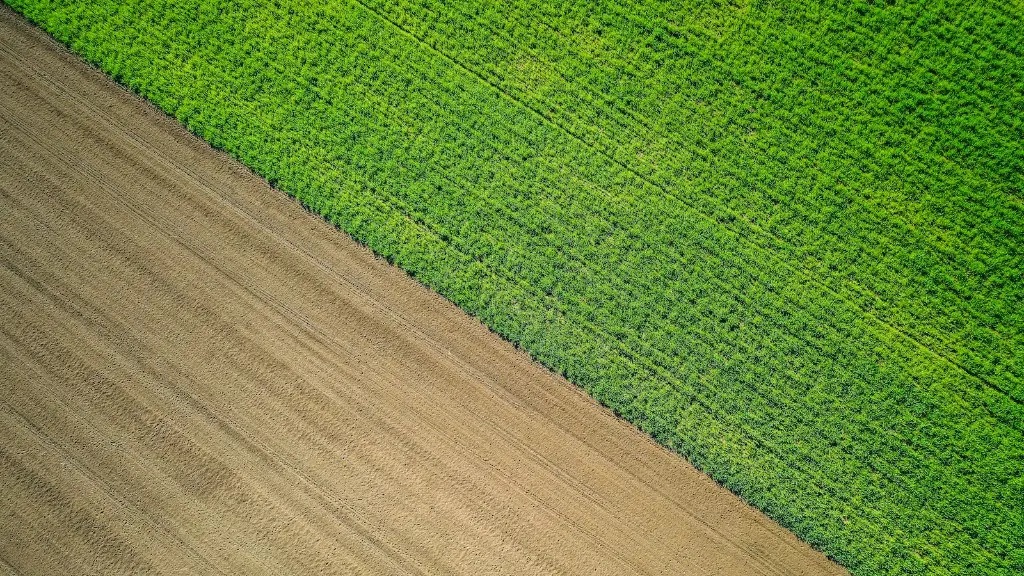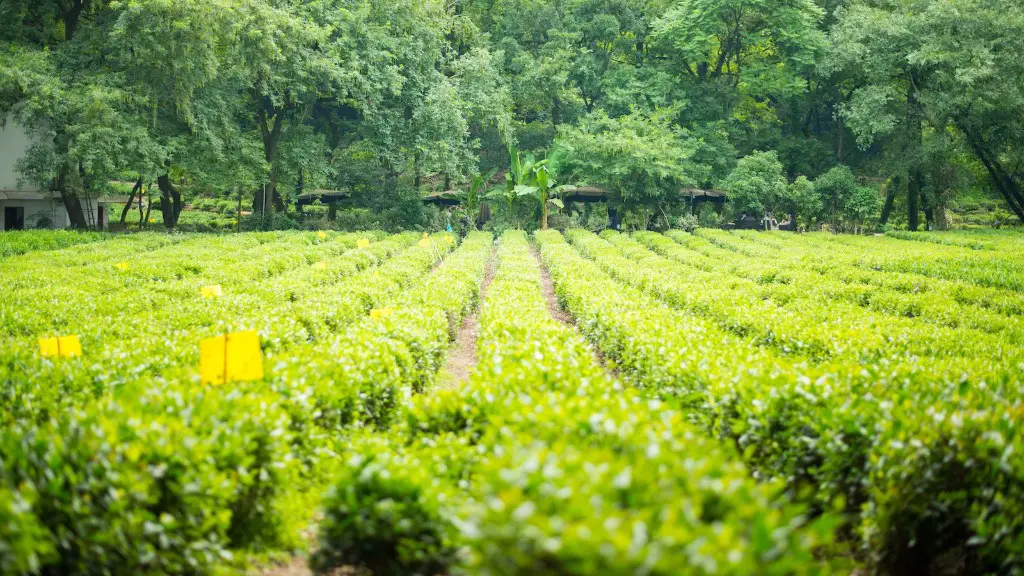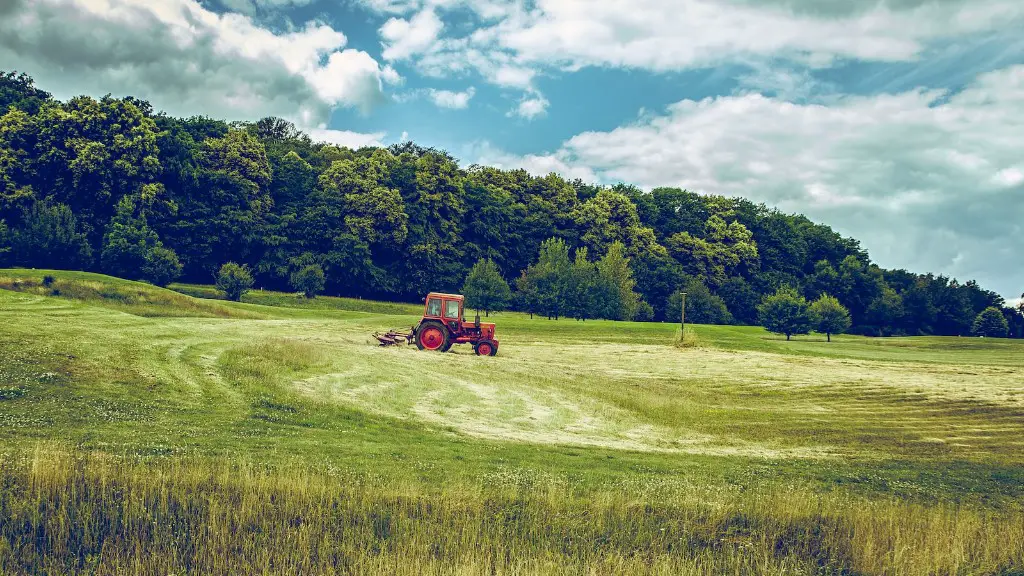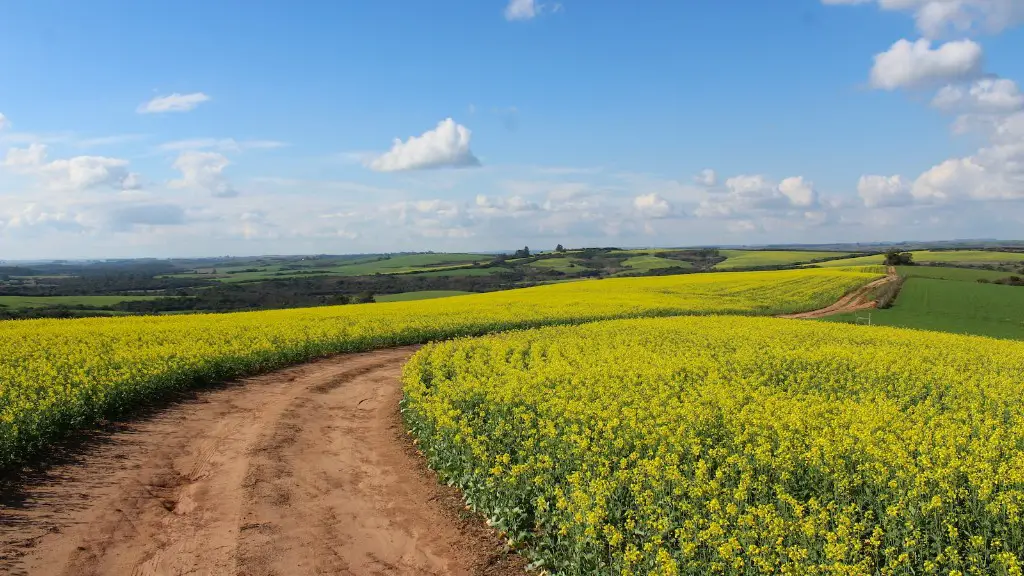Agriculture is one of the main contributors to global warming. The main way agriculture contributes to global warming is through the production of greenhouse gases. Greenhouse gases are gases that trap heat in the atmosphere and cause the Earth’s average temperature to rise. The two main greenhouse gases produced by agriculture are carbon dioxide and methane.
Carbon dioxide is produced by the burning of Fossil fuels, such as natural gas, oil, and coal. Methane is produced by the decomposition of organic matter, such as manure and crop residues. Agricultural activities also contribute to other sources of greenhouse gases, such as nitrous oxide and fluorinated gases.
Global warming is a serious problem that is affecting our planet. It is important to be aware of the ways we can contribute to global warming, and take steps to reduce our impact.
There is a lot of debate on how much agriculture contributes to global warming. Globally, agriculture is responsible for about 10% of human-induced greenhouse gas emissions. However, the contribution from individual countries can vary greatly. For example, in the United States, agriculture accounts for about 3.9% of total greenhouse gas emissions, while in Brazil it is responsible for about 70%. One of the main ways that agriculture contributes to global warming is through livestock production. Livestock are responsible for about 14.5% of all human-induced greenhouse gas emissions, with the majority coming from cows. Cows emit methane gas, which is a very potent greenhouse gas. Additionally, the clearing of land for agriculture can also contribute to global warming. When forests are cleared, the trees that once absorbed carbon dioxide are lost, and the soil that is exposed to the sun can release greenhouse gases as well.
How does agriculture help cause global warming?
Agricultural emissions, including carbon dioxide, are a major contributor to climate change. Other agricultural emissions include methane and nitrous oxide, which come from enteric fermentation, rice cultivation, and livestock manure. Agricultural emissions also include carbon dioxide from on-farm energy use.
The panel of scientists found that agriculture, deforestation, and other land use generate about a third of human greenhouse gas emissions, including more than 40% of methane. They also looked at the climate change effects of these activities and found that they can have a significant impact on the environment.
How is agriculture affecting the environment
Agriculture is the leading source of pollution in many countries. Pesticides, fertilizers and other toxic farm chemicals can poison fresh water, marine ecosystems, air and soil. They also can remain in the environment for generations.
We also know that one of the major contributors to climate change is factory farming, which releases vast volumes of greenhouse gases into the atmosphere.
Factory farming is not only contributing to climate change, but it is also causing other environmental problems such as water pollution and soil erosion.
It is clear that we need to find a better way to produce food, one that is more sustainable and does not put our planet at risk.
Is global warming caused by agricultural waste?
Agriculture produces a substantial amount of greenhouse gas emissions, which contribute greatly to global warming and climate change. In order to mitigate these effects, it is important to adopt sustainable agricultural practices that reduce emissions and promote carbon sequestration.
While large-scale, conventional farming can be productive, it also has significant negative impacts on the environment. Climate change, pollution, and soil depletion are all serious problems that need to be addressed.
What is the negative impact of agriculture?
Agriculture is one of the leading causes of environmental issues that cause environmental degradation. Agriculture contributes to climate change, deforestation, biodiversity loss, dead zones, genetic engineering, irrigation problems, pollutants, soil degradation, and waste. Agricultural practices are a major source of greenhouse gas emissions, including carbon dioxide, methane, and nitrous oxide. Agriculture is also a leading cause of deforestation, as forests are cleared to make way for crops and grazing land. This deforestation can lead to biodiversity loss, as well as soil erosion and degradation. Agricultural irrigation can also lead to water shortages and pollution, as well as contributing to dead zones in waterways. Additionally, agriculture is a major source of pollution, from pesticides and fertilizers to livestock waste. Soil degradation is another major environmental issue caused by agriculture, as soil is lost to erosion, pollution, and deforestation. Finally, agriculture contributes to a large amount of waste, from food waste to livestock manure.
Climate change affects agriculture in a number of ways, including through changes in average temperatures; rainfall and climate extremes with an important impact on soil erosion (ie floods, drought, etc): changes in pests and diseases, changes in atmospheric carbon dioxide, changes in the nutritional quality of some crops. All these factors have a big impact on farmers and the agricultural sector as a whole.
How does agriculture cause greenhouse gases
Carbon dioxide emissions from farm equipment can have a significant impact on the environment. The more passes made by farm equipment across fields, the more carbon that is emitted. These emissions can contribute to climate change and can also have other negative environmental impacts. Farmers can take steps to reduce their emissions by using more efficient equipment and by minimizing the amount of time their equipment spends idling.
Methane and nitrous oxide are both greenhouse gases that have a significant impact on the Earth’s climate. Cows are a major source of methane, due to their digestive process and waste. Agricultural practices, such as the use of fertilizers, can also lead to the release of these gases.
What are the 5 major consequences of agriculture?
Agriculture is one of the main drivers of environmental change. The five main environmental effects of agriculture are soil fertility loss, eutrophication of water bodies, deforestation, climate change and pesticide pollution.
Soil fertility loss is caused by the depletion of essential nutrients in the soil. This can be due to the overuse of fertilizers, the lack of crop rotation, or simply the exhaustion of nutrients in the soil. Eutrophication of water bodies is caused by the excessive nutrient runoff from agricultural land. This can lead to the growth of harmful algae blooms, which can deplete oxygen levels in the water and harm aquatic life. Deforestation is often a result of agriculture, as trees are cleared to make way for farmland. This can have a devastating effect on local ecosystems, as well as the global climate. Climate change is happening more and more frequently, and agriculture is one of the main contributors. Agricultural activities lead to emissions of greenhouse gases, which trap heat in the atmosphere and cause the Earth to warm. Pesticide pollution is another effect of agriculture. Pesticides can runoff into waterways, where they can harm aquatic life. They can also be deposited in the soil, where they can be taken up by plants and eventually end up in
Harvesting crops represents a significant amount of nutrients, water, and energy being taken from the land. This leaves the land barren, and unfriendly for the growth and development of new organisms and ecosystems. This is especially true of land used for industrial monoculture farms.
What is the biggest problem in agriculture
There are two large problems facing agriculture in the modern world. The first is the loss of agricultural land through erosion and other manmade factors. The second is the increasing lack of diversity in crops.
Loss of agricultural land is a major problem because it reduces the amount of land available for farming. This can lead to higher food prices and less food security. It can also cause environmental problems, as eroded land is often not suitable for other uses.
The lack of crop diversity is also a major problem. This is because it can lead to greater vulnerability to pests and diseases. It can also make it more difficult to obtain essential nutrients from the diet.
While agriculture can have a positive impact on the environment, it can also cause negative effects. Inorganic nitrate pollution, pesticide pollution and salinity problems can all be caused by agriculture, especially in regions where it is done intensively. These problems can damage the natural life, oxygen production and climate in a region.
How much does agriculture contribute to greenhouse gas?
It is important to note that non-food agricultural products such as cotton, wool, leather, rubber and biofuels are not included in the estimate of 33% contribution to global emissions. These products can have a significant impact on the environment and should be accounted for separately.
Food production is a significant source of environmental problems. Growing food requires a large amount of water, which can lead to water shortages and water pollution. Greenhouse gas emissions from food production contribute to climate change. And the use of pesticides and other chemicals can contaminate the environment and pose risks to human health. depletion of natural resources.
There are some ways to reduce the environmental impact of food production. One way is to choose more sustainable methods of production, such as organic farming. Another way is to support businesses that are working to reduce their environmental impact, such as zero waste grocery stores.
Final Words
There are a number of ways that agriculture contributes to global warming. First, agricultural activities release greenhouse gases like carbon dioxide and methane into the atmosphere. These gases trap heat and cause the Earth’s temperature to rise. Second, agriculture involves the clearing of large tracts of land, which exposes the dark soil to the sun. The soil absorbs heat, which contributes to the warming of the Earth’s surface. Finally, agriculture requires the use of large amount of energy, which usually comes from the burning of fossil fuels. Fossil fuel combustion releases greenhouse gases into the atmosphere, contributing to the greenhouse effect and global warming.
The greenhouse gases produced by agriculture are a major driver of climate change. The growing and raising of livestock, as well as the production of food, emits large amounts of carbon dioxide, methane, and nitrous oxide. These gases are major contributors to the greenhouse effect, trap heat in the atmosphere, and cause global temperatures to rise.





